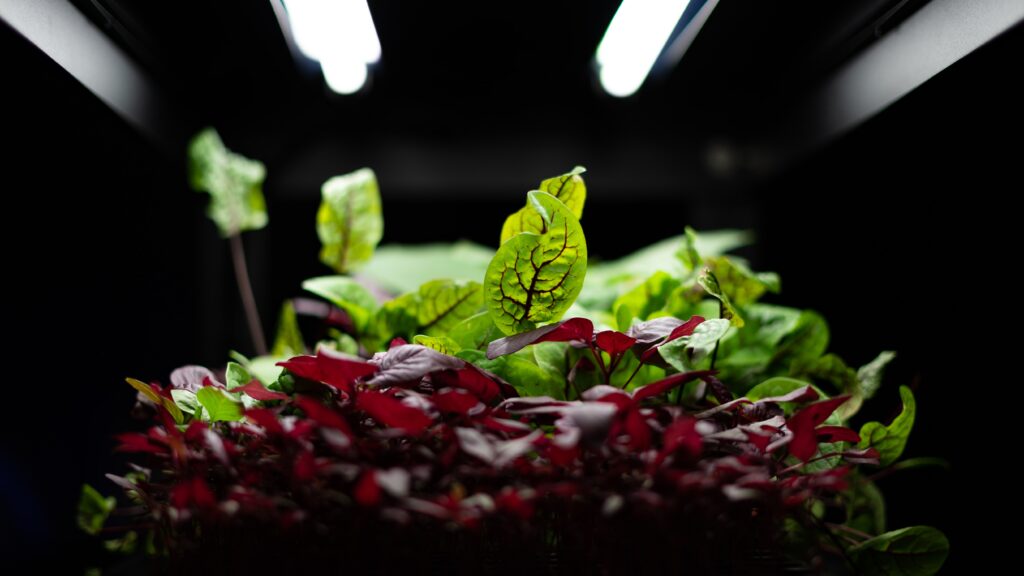
January 9, 2023
Without light, plants simply wouldn’t be able to grow. But some kinds of light are much more effective than others at helping plants flourish. If you want the best for your plants, understanding how light affects plants and the underlying terminology is important.
Below are the key metrics for horticultural lights and some things to think about when selecting a light for your facilities.
Light Output & Spectrum
Mole
Photons are light particles and there is a huge number in visible light. Also known as Avogadro’s number, a mole is a measure of light particles. More specifically, this is the number 602,214,150,000,000,000,000,000. A micromole is one-millionth of a mole or 602 quadrillion.
PAR (Photosynthetically Active Radiation)
The part of the electromagnetic radiation spectrum, or light, that is important to plants to activate photosynthesis. This is roughly the same light that is visible to the human eye and is the light spectrum between 400 and 700 nm.
For lighting products, we’re concerned with how much total light is produced, how much of the light the plants receive, and how much light they receive during the plant’s photoperiod.
PPF (Photosynthetic Photon Flux)
The total amount of Photosynthetically Active Radiation (PAR) produced per second. It is measured in micromoles per second, or μmol / second for the spectral band from 400–700nm.
Far-Red Photon Flux
Far-Red light between 700 and 800 nm has been shown to have substantial benefits to plants in indoor growing situations where there is no natural sunlight. Far-red photon flux is the total amount of photon flux produced per second for the spectral band between 700–800nm.
PBAR (Total Photon Flux)
PBAR is the total photon flux that is beneficial to plants and includes both the PPF and Far-Red spectral bands and is the total photon flux for the spectral band 350–800nm.
PPFD (Photosynthetic Photon Flux Density)
You can think of this as the light intensity at the plant canopy and it is the actual amount of light in the PPF Spectrum measured per square meter at the plant canopy. It is measured in micromoles per square meter per second, or μmol/m2/s.
Far Red Flux Density and PBAR Flux Density
Far-Red Flux Density is a measure of the Far-Red (700-800 nm) light intensity at the plant canopy
PBAR Flux Density is a measure of total photon flux that is beneficial to plants (350-800 nm) at the plant Canopy
DLI (Daily Light Integral)
The total amount of light that is delivered to a plant canopy every day during the photoperiod. This is measured in moles per square meter per day or mol/m2/d. A light with a lower PPF can provide the same amount of DLI if the photoperiod is increased.
Efficacy Measures
Efficacy
Defines a grow light’s ability to convert power measured in Watts, into light radiation that is beneficial to plants. The metric used to measure efficacy is micromoles per second per Watt—which simplifies to µmol/J since a Watt is a Joule per second.
There are 2 different Efficacy measures that are important:
PPE (Photosynthetic Photon Flux Efficacy)
PPE describes how much PPF (Photosynthetic Photon Flux) is produced per watt of power. This is commonly used to measure efficacy of horticultural lights and is ideal for greenhouse light supplementation. It does not measure Far-Red spectrum, so it is not a good measure for lights that incorporate Far-Red for indoor growing applications.
PBAR Efficacy
PBAR Efficacy measures how much PPF (Photosynthetic Photon Flux) and Far-Red Photon Flux is produced per watt of power and is a better measure of efficacy for lights that incorporate Far-Red spectrum.
Choosing the right greenhouse grow light is crucial to getting the best yield possible out of your crop. We offer unique cannabis grow lights that can increase your yield by up to 60%. Contact us today, and get more from your lights!




